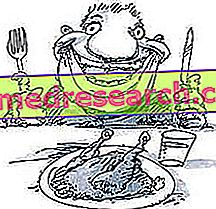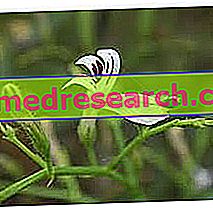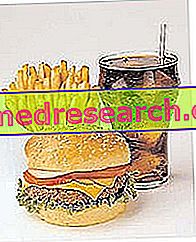Food microorganisms
Since ancient times man has been constantly looking for innovative methods to preserve his food longer.
It was in 1862 when the French biologist Louis Pasteur experimented the food pasteurization process for the first time. With this innovative technique it was possible to reduce the number of pathogenic microorganisms in particular foods, at the same time improving food safety and prolonging their conservation.

Symptoms vary according to the type and extent of the disease but are generally characterized by disorders of gastrointestinal origin such as nausea, diarrhea and abdominal pain associated in severe cases with fever and neurological changes.
At the onset of symptoms that may suggest a foodborne illness, it is advisable to contact your doctor or the nearest emergency room immediately, especially if you are suffering from children or elderly people.
Not all microorganisms in food are pathogenic. Some, like the " saprophytes ", simply tend to alter the organoleptic characteristics of the food, others are neutral and others even perform a favorable action as the live lactic ferments present in the yogurt.
In some cases the multiplication of pathogenic microorganisms does not alter the characteristics of the food which, despite the contamination, has the same appearance, taste and consistency. The preservation of the organoleptic characteristics is therefore not a sufficient condition to rule out a possible food infection.
Some bacteria are able to withstand extreme environmental conditions by entering a state of temporary quiescence. As soon as the characteristics favorable to their development are restored, the proliferative processes quietly resume.
The human immune system is able to oppose possible infections with an effectiveness that depends on the type and quantity of bacteria introduced with food. Particularly at risk of infection are therefore debilitated people (stress, pathologies etc.), children and the elderly.
The extent and damage caused by the infection are usually dependent doses; they depend on the quantity of contaminated food ingested. Even in this aspect there are significant differences between the various microorganisms and, while some need high bacterial loads, others require very small quantities of infected food (eg botulinum) to cause the disease.
Insights
| Salmonella | Shigella | Diarrhea of the traveler |
| Escherichia coli | malabsorption | Cholera |
| Botox in foods | Bacilus cereus | Campylobacter |
| Clostridium perfringens | Giardia - Giardiasis | Gastroenteritis |
| Norovirus | Hepatitis A | Hepatitis E |
| Trichinella | Yersinia Enterocolitica | Staphylococcus aureus |
| Histamine in foods | Botulinum and foods | Aflatoxins - Biogenic amines |
Food diseases and minimum cooking temperature
The main functions of cooking are two: on the one hand the increase in the digestibility of foods and on the other the elimination of pathogenic microorganisms.
Both these features are closely related to the temperature and cooking time. If foods are cooked too little there is a risk that some viruses and bacteria survive, but if they are cooked too long they can become toxic due to the formation of carcinogens.
Each food requires different preparation times and methods, for which a maximum and a minimum cooking temperature is established.
The minimum cooking temperature is defined as the temperature below which there is a risk that some of the bacteria present in the food will survive. It may also happen that at the time of consumption the food has already been contaminated by toxic metabolites produced by bacteria: toxins.
Types of Food Diseases
There are therefore three types of foodborne illnesses that can be contracted by consuming inadequately cooked foods:
- food infection : it arises following the consumption of food contaminated with pathogenic bacteria. Once in the intestine these microorganisms colonize it, multiplying and causing tissue damage. The higher the number of bacteria ingested, the greater the risk that the immune system cannot cope with the infection
- food poisoning : occurs following the consumption of foods containing toxins of bacterial origin. It is therefore not the bacterium that causes the infection directly but the toxic substance it produces. In fact, some foodborne illnesses arise due to toxins, the producer of which is already dead at the time of consumption.
- food poisoning : derives from the simultaneous presence of pathogenic microorganisms and toxins. Once arrived in the intestine the bacterial charge proliferates releasing toxins harmful to the organism.
Although the ideal temperature range for the development of pathogenic microorganisms varies according to the microbial species, it is generally between 5 and 60 ° C.
If on the one hand the cold is not able to eliminate bacteria but only to delay or block its development, on the other hand temperatures above 70 ° C are generally sufficient to completely eradicate them. This is the case, for example, of salmonella or the fearsome H5N1 virus present in the flesh of infected birds that has caused so much discussion in the winter of 2005-2006: both are completely destroyed by careful cooking which consequently eliminates any risk of infection.
CONTINUE: Part Two »



